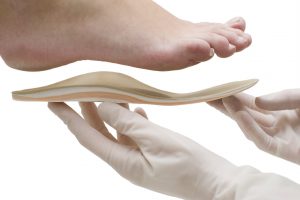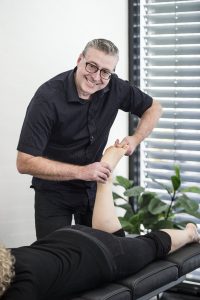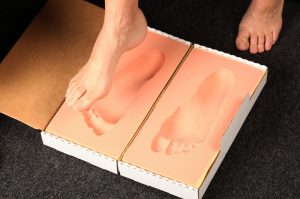As a consumer it can be tough to know if you should see your Chiropractor or Podiatrist for your foot problem? To help answer this questions let’s look at what Chiropractic and Podiatry can offer.
What is Chiropractic?
The word Chiro derives its root from the Greek kheir ‘hand’ meaning ‘combining form’ of the hand or hands. Chiropractic training differs from College to College however the main premise of Chiropractic is manipulation of the spine for therapeutic purposes. This comes down from over a century since the first official adjustment (manipulation) was performed by D.D. Palmer of the cervical spine (neck).
The Chiropractors’ Association of Australia (CAA) National supports the Definition of Chiropractic as described by the World Federation of Chiropractic (WFC) in 2001 – A health profession concerned with the diagnosis, management and prevention of mechanical disorders of the musculoskeletal system, and the effects of these disorders on the function of the nervous system and general health.
What do Chiropractors do?
 Chiropractors’ specialty and training varies however its specific training is honed on the spine and its effect on musculo-skeletal disorder causing pain and disease via nerve compression within the spinal column. If you ask most people in society about what they know of Chiropractic, they would reply with the answer, “Chiropractic is for back pain”.
Chiropractors’ specialty and training varies however its specific training is honed on the spine and its effect on musculo-skeletal disorder causing pain and disease via nerve compression within the spinal column. If you ask most people in society about what they know of Chiropractic, they would reply with the answer, “Chiropractic is for back pain”.
Chiropractors are extremely well trained and known for manipulation of the spine. The most part of their training and practice revolves around the spine and relief of nervous tension. Some Chiropractors will also work on the the extremities (Arms and Hands and Legs and feet). Some may even use shoe inserts (like orthotics) such as foot levellers.
The individual expertise of every Chiropractor differs as it does with every Podiatrist.
What is Podiatry?
A Podiatrist is an Allied Health professional who specialises in treating the feet and legs (typically below the knee). They can treat conditions such as toe fungus, ingrown toenails, corns, calluses, bunions, infections and foot injuries. They can also treat foot problems that arise from underlying medical conditions such as diabetes and arthritis.

Your podiatrist’s recommendations might include specific exercises, the use of custom-made inserts for your shoes, or medications to treat skin conditions.
Some podiatrists specialise in different areas of practice, including sports, children and workplace health. Others’ focus in hands-on modalities such as Foot Mobilisation Technique (FMT). FMT is the art of stimulating nervous tissue in order to create change in the surrounding environment. Eg Muscles, tendons, ligaments, capsules. A Podiatrist practicing in the art of FMT from the outside to an unskilled eye looks like they’re performing a combination of various hands on techniques. Many say they look and feel like they’re performing a combination of Physiotherapy and Chiropractic techniques.
What are Orthotics (shoe inserts)?
Podiatrists also specialise in biomechanical issues of the foot and leg utilising supportive devices known as orthotics. They come in either a “pre-form” which is a cast predetermined to fit most foot types to lift the arch of the foot therefore reducing stress on the connective tissue helping to achieve symptomatic relief.

A custom orthotic is a device designed and cast by the practitioner to align the foot and ankle into the most anatomically efficient position for that person. Custom orthotics work on your feet much like glasses work on your eyes – they reduce stress and strain on your body by bringing your feet back into proper alignment. The body shape of the custom orthotic helps to re-align the foot by redirecting and reducing certain motion that takes place during the gait cycle. Custom orthotics fit into your shoes as comfortably as an insole – and they have the advantage of having been made from precise imprints of your feet. It’s correct term, Orthoses is derived from the ancient Greek word “Ortho”, meaning “the right way” or “to make right”. Getting orthotic shoe inserts to work well is as much and art as it is a science.
What is Foot Mobilisation and Manipulation for Feet?

A Podiatrist who has trained in Foot Mobilisation Techniques has developed hands on mobilisation and manipulation techniques specifically for the foot and leg. Much like a Chiropractor has for the spine. The art of helping feet with manual therapy rests on achieving good structure and function of the foot. Manual therapy techniques can be very effective at helping achieve this.
Determining where your foot (or for that matter back) problem is coming from is the key. Getting this right will ensure you get the best outcomes for you.
A Chiropractor can refer to a Podiatrist if they believe the spinal issue relates or may be coming from poor foot posture and vice versa. A Podiatrist can refer to a Chiropractor if they believe the foot issue is back related and often they work together to achieve the best outcomes for you.
For a specific foot problem generally, no one knows feet like a Podiatrist. So for foot issues such as heel and arch pain, Achilles tendonitis, shin pain and bunions it is usually best to start with a Podiatrist (and for back issues a Chiropractor).
Seeking a Podiatrist with Foot Mobilisation Therapy training will ensure you give your feet all the options for a speedy recovery.
More blog posts…







Thank you so much for sharing all this wonderful info. It is so appreciated.